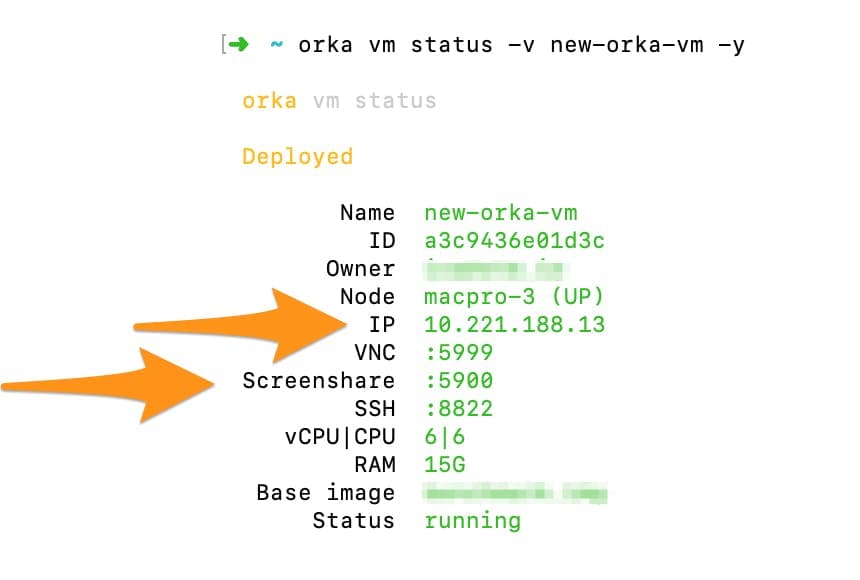Orka Overview Part 3: Remote Desktop Login for Mac VMs
Why Use Remote Desktop on a Mac VM?
If you’re a developer, you know connecting to a VM is essential. And, when you connect, getting a traditional view of your machine is pretty helpful. Although many devs do prefer SSH and terminal commands, there are some things that can be done only from the macOS GUI in front of a traditional monitor.
To that end, Orka has you covered. Out-of-the-box, Orka VMs come with assigned and opened VNC, SSH, and ScreenShare ports.

VNC vs. Apple ScreenShare
Open right from deployment, the VNC port provides your first entry point into your VM. Through it, you can jump onto your VM and complete any pending OS setup. This is also where you unlock extra remote login capabilities (SSH, for example) as you would with any macOS installation.

Some admins might opt to disable VNC for added security. Or some devs might want to avoid the hassle of downloading an extra VNC client. This is where the built-in Apple ScreenShare feature comes in handy. Make sure it’s already enabled in the OS system preferences. The port is already opened, so Apple ScreenShare is good to go after that.

One thing that confuses some users is the Apple ScreenShare connection starts with “vnc://”. This may seem counter-intuitive as the protocol you pass is still “VNC,” but stick with us. Apple has added an additional layer of password protection that pulls from the macOS user/password system, making this connection the preferred connection by enterprise security teams.
An important note - a developer does not need to have an Orka user account to log in and debug. The VM needs to be up and running, and the dev obviously needs a valid user name and password on the system, but that’s all. This makes it easy to give developers a debugging option while not creating a series of accounts that need to be managed on Orka.
For a more in-depth, screen-shot-based walkthrough, check out the Orka docs page on VNC to VM.
At MacStadium, we believe in enabling virtualization for macOS the right way and are happy to incorporate best practices in an easy-to-use fashion. Keep your eyes peeled for more installments in our Orka overview series. And if you haven’t played around with our Orka demo, what are you waiting for? The Orka demo is ready for you - with a 20-minute walkthrough and up to two hours to explore.
Ready to get started? One of our sales engineers would be happy to help you evaluate Orka or any of your other Mac cloud infrastructure needs. Contact us now at sales@macstadium.com or by filling out the form here.
